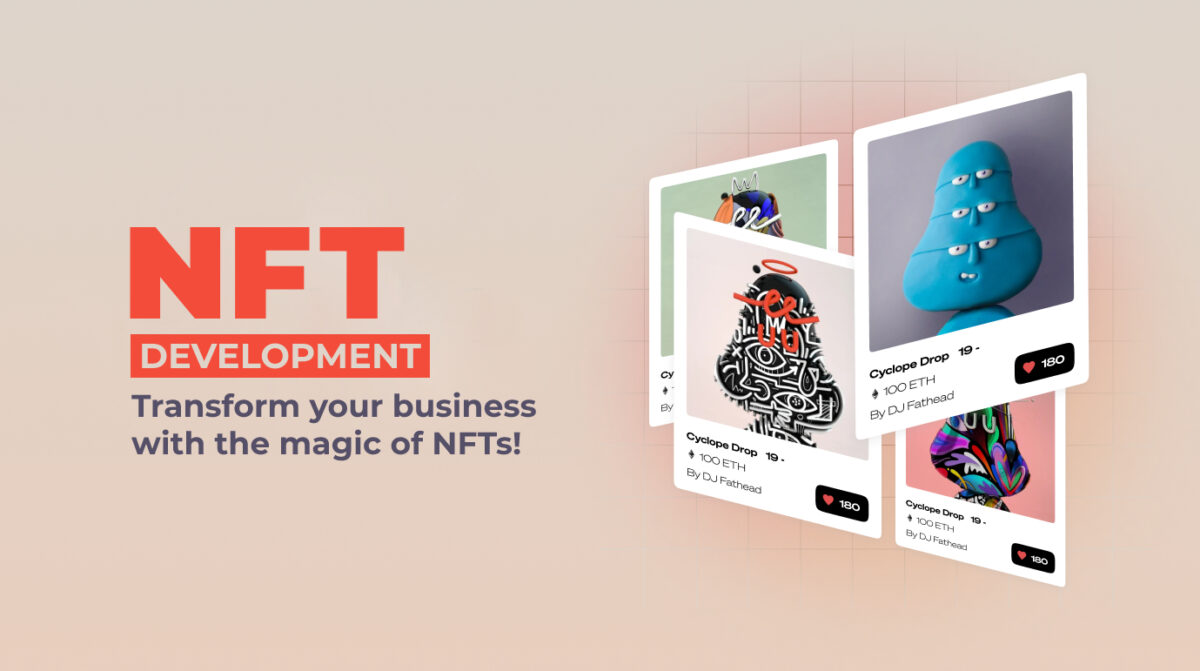
In recent years, Non-Fungible Tokens (NFTs) have taken the world by storm, revolutionizing how we perceive and interact with digital assets. From art and collectibles to gaming and virtual real estate, NFTs have opened up a world of possibilities for creators, investors, and consumers alike. As the NFT ecosystem continues to evolve at a rapid pace, it’s essential to stay abreast of the emerging trends shaping the future of NFT development. In this comprehensive exploration, we delve into the latest trends and innovations driving the NFT space forward.
1. Metaverse Integration: NFTs as Virtual Assets
One of the most significant emerging trends in NFT development is the integration of NFTs into the metaverse. As virtual worlds and digital ecosystems continue to expand, NFTs are increasingly being used to represent ownership of virtual assets such as avatars, clothing, accessories, and even virtual real estate. This trend is blurring the lines between the physical and digital worlds, opening up new avenues for commerce, social interaction, and self-expression within virtual environments.
2. Fractionalized Ownership: Democratizing Access to NFTs
Fractionalized ownership is another emerging trend that is democratizing access to NFTs and making them more accessible to a broader audience. By dividing NFTs into smaller, tradable fractions, fractionalized ownership platforms enable individuals to invest in high-value NFTs without needing to purchase the entire asset. This trend is lowering the barrier to entry for NFT investing and expanding the pool of potential participants in the NFT market.
3. Dynamic NFTs: Evolving and Interactive Digital Assets
Dynamic NFTs represent a new frontier in NFT development, offering digital assets that can evolve, change, or interact with their environment over time. Unlike traditional static NFTs, which remain unchanged once minted, dynamic NFTs can incorporate real-time data, user interactions, or external events to alter their appearance or functionality. This trend is unlocking new possibilities for creativity, storytelling, and utility in the world of NFTs.
4. Environmental Sustainability: Green NFTs and Carbon Offsets
As concerns about the environmental impact of blockchain technology continue to grow, there is a rising demand for environmentally sustainable NFT solutions. Green NFTs, which are minted on eco-friendly blockchain networks or backed by carbon offsets, are emerging as a viable solution to address these concerns. This trend reflects a broader shift towards sustainability and responsible stewardship within the NFT community.
5. Social Impact NFTs: Driving Positive Change Through Digital Assets
Social impact NFTs are gaining traction as a means of driving positive change and supporting charitable causes through digital assets. From fundraising campaigns and awareness initiatives to philanthropic projects and community-driven initiatives, social impact NFTs are harnessing the power of blockchain technology to make a difference in the world. This trend highlights the potential of NFTs to serve as a force for good and drive meaningful impact beyond the realm of finance and entertainment.
6. Cross-Chain Compatibility: Interoperability Across Blockchain Networks
Interoperability is a key focus area in NFT development, with efforts underway to enable seamless transferability of NFTs across different blockchain networks. Cross-chain compatibility solutions are emerging to facilitate interoperability, allowing NFTs to move fluidly between Ethereum, Solana, Binance Smart Chain, and other blockchain platforms. This trend is enhancing liquidity, accessibility, and utility in the NFT ecosystem, paving the way for a more interconnected and versatile digital asset landscape.
7. Augmented Reality (AR) NFTs: Blending Physical and Digital Realities
Augmented reality (AR) NFTs represent an exciting convergence of digital and physical worlds, enabling users to experience NFTs in immersive, interactive environments. By leveraging AR technology, creators can bring their NFTs to life, allowing users to view, interact with, and even manipulate digital assets in the real world. This trend is unlocking new opportunities for engagement, entertainment, and storytelling in the NFT space.
8. Gaming NFTs: Unlocking In-Game Assets and Economies
Gaming NFTs are transforming the gaming industry by enabling true ownership of in-game assets and economies. Players can buy, sell, and trade NFT-based items, characters, and virtual goods both within and across gaming ecosystems. This trend is revolutionizing the concept of digital ownership in gaming, empowering players to monetize their time and skills and fostering vibrant player-driven economies.
9. NFT Marketplaces: Diversification and Specialization
The proliferation of NFT marketplaces is driving diversification and specialization within the NFT ecosystem. While established platforms like OpenSea and Rarible continue to dominate the market, niche marketplaces catering to specific genres, communities, and use cases are emerging. These specialized marketplaces offer curated collections, unique features, and tailored experiences tailored to the needs and preferences of their target audiences.
10. DeFi Integration: NFTs as Collateral and Financial Instruments
DeFi integration is blurring the lines between NFTs and decentralized finance (DeFi), enabling NFTs to serve as collateral, liquidity providers, and financial instruments in decentralized lending, borrowing, and trading protocols. This trend is unlocking new opportunities for liquidity mining, yield farming, and asset-backed lending using NFTs as underlying assets. It also represents a convergence of two rapidly growing sectors within the blockchain space.
In conclusion, the emerging trends in NFT development are shaping the future of digital assets, driving innovation, and expanding the possibilities of blockchain technology. From metaverse integration and fractionalized ownership to dynamic NFTs and social impact initiatives, these trends reflect the diverse and dynamic nature of the NFT ecosystem. As the space continues to evolve, it will be fascinating to see how these trends unfold and shape the trajectory of NFT development in the years to come.